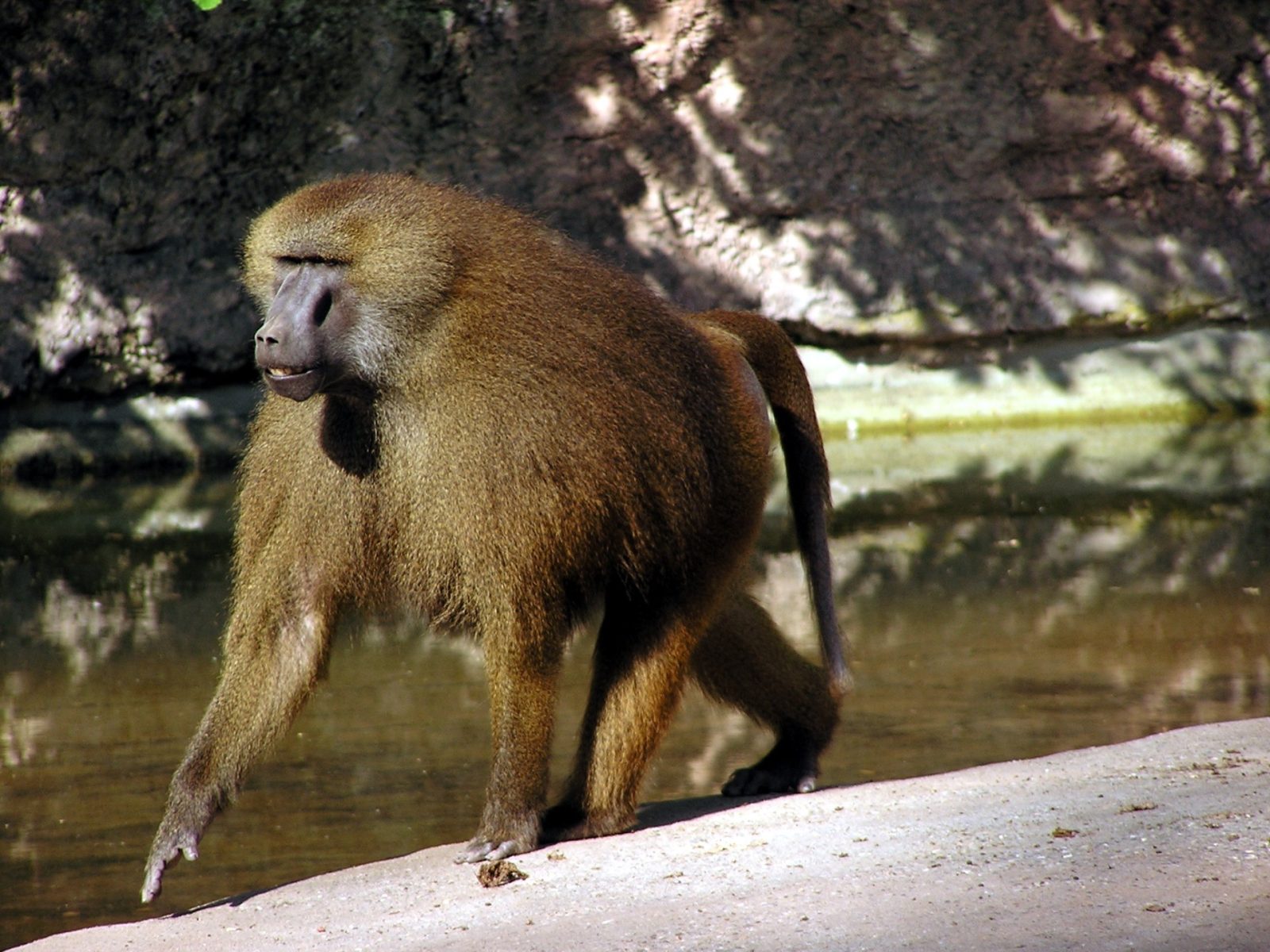
Guinea Baboon
Older classifications only list 2 species of baboon – the hamadryas baboon and the Savannah baboon (this was considered to include all other baboons – but they are too distinct for this, hence each being treated as a separate species).
The Guinea baboon inhabits a small area in western part of the continent. Its range includes Guinea, Senegal, Gambia, southern Mauritania and western Mali. Its habitat includes dry forests, gallery forests, and adjoining bush savannas or steppes. It also has limb modifications that allow it to walk long distances on the ground. The Guinea baboon is one of the smallest baboon species, only weighing 13 and 26 kg (28.6–57 lbs). Their life spans are generally between 20 and 50 years.
It is a Terrestrial animal, but sleeps in trees or high rocks at night, away from predators. The number of suitable sleeping trees limits the Group size measures and the range. It lives in troops of up to 200 individuals, each with a set place in a hierarchy. Group living provides protection from predators such as the Lion and various Hyena species. Like all baboons, it is an Omnivorous highly opportunistic feeder, eating fruits buds, roots, bark, grasses, seeds, tubers, leaves, nuts, cereals, insects, worms, birds, mammal.
Because it will eat practically anything available, the Guinea baboon is able to occupy areas with limited resources or harsh conditions. Its presence may help improve habitats because it digs for water and spreads seeds in its waste, encouraging plant growth.
The Guinea baboon is a highly communicative animal. It communicates by using a variety of vocalizations and physical interactions. In addition to vocalizations to each other, this animal has vocal communications apparently intended to be received and interpreted by predators. Due to its small range and the loss of its habitat, the Guinea baboon is classified as “near threatened” by the IUCN – this is one up from least concern, suggesting that at the current time they are alright, but if the current trend continues then this species is going to start moving towards extinction. It should be noted, that this is the only true baboon species which is not least concern – warranting species attention
We hope to have destinations where you can see this species, in the near future. These will appear below the news section below (this section will update any time that an article is written which mentions the Guinea baboon)










